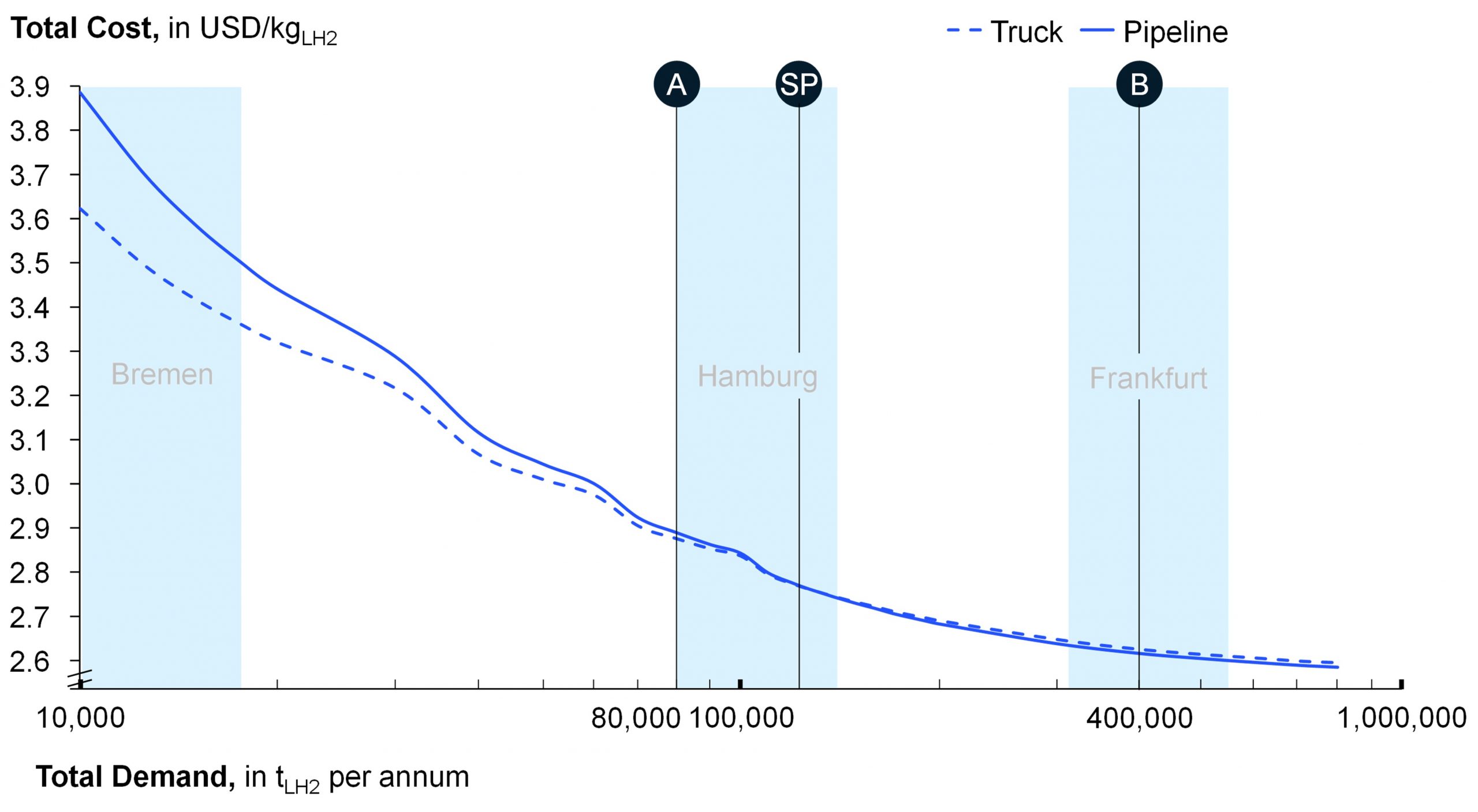H2-powered aviation at airports – Design and economics of LH2 refueling systems
The new Clean Aviation and Clean Hydrogen Partnership Joint Undertaking calls for proposals clearly underscore the high level of interest in H2-powered aviation. Recent news from players such as Airbus Group Inc, ZeroAvia, Universal Hydrogen, Cranfield Aerospace Solutions, HyPoint, Safran, GE Aviation, CFM International (CFM), Plug Power and many others also underscore this trend.
This is why this study investigated what it would take to fuel commercial aircraft with LH2. In collaboration with the German Aerospace Center (DLR) and the University of Stuttgart, the installation of such a novel refueling infrastructure is analyzed in two parts.
In the first paper, a techno-economic analysis of two different refueling systems (trucks vs. pipelines) is performed based on new scenarios for the demand of H2-fueled aircraft at airports in 2050 (see the resulting supply costs in the figure above).
The key findings are:
(1) The cost of LH2 refueling systems is expected to be only 3-4% ($0.10-0.13/kgLH2) of the total LH2 supply cost. If H2 is delivered to the airport in liquid form, the capital cost at airports is limited.
(2) At smaller airports, LH2 refueling vehicles are always the most economical and feasible solution – at larger airports, several factors (e.g., safety, space) must be considered in addition to cost to decide between refueling vehicles and a pipeline and hydrant system.
(3) Medium-sized airports such as Hamburg Airport could play an important role as a regional hydrogen hub requiring more than 100,000 tons of LH2 per year – however, such H2 demand at airports will not be realized until later due to the long development times of H2-fueled aircraft. Therefore, this effect should be considered when planning regional H2 hub structures.
In combination with the second part, it is found that further analysis of airport H2 supply infrastructures (international vs. decentralized) is urgently needed. In addition, technology demonstrators for refueling are needed to test our techno-economic assumptions and to evaluate the safety and certification aspects of such systems.
First part: https://doi.org/10.1016/j.ecmx.2022.100206
Second part: https://doi.org/10.3390/en15072475
Thanks to all authors: Moritz Flohr, Richard Hanke-Rauschenbach, Astrid Bensmann, Jonas Mangold, Daniel Silberhorn, Nicolas Moebs, Niclas Dzikus, Thomas Zill and Andreas Strohmayer!

